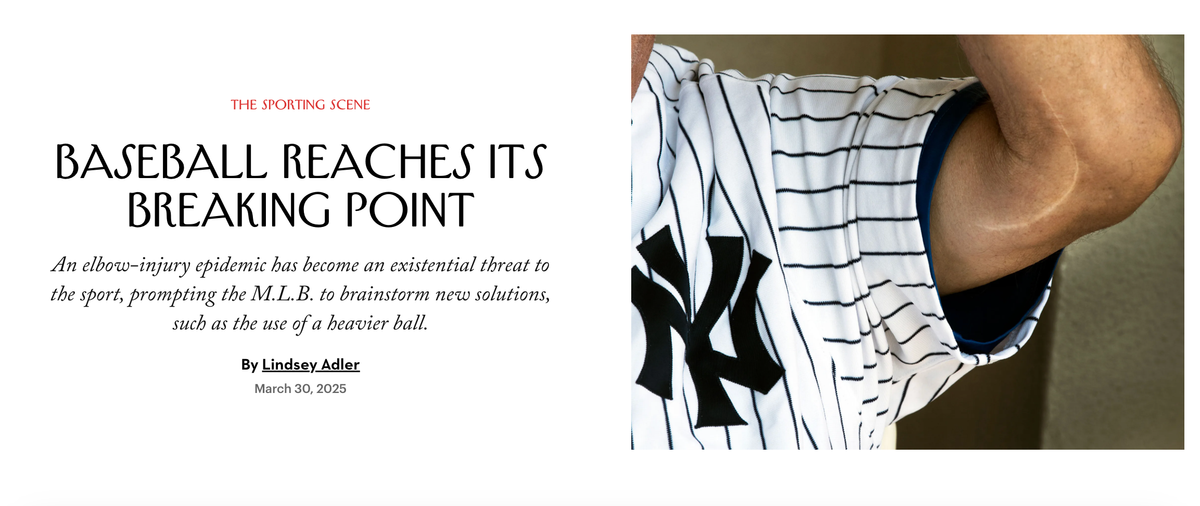Under The Knife

On a recent Saturday morning, my phone started lighting up with up-close images of the inside of an anonymous professional pitcher’s elbow. I was on the phone with Dr. Keith Meister, an orthopedic surgeon who is typically the first or second call for a baseball player who needs his elbow ligament repaired.
He was sending these photos while talking me through his surgical process. In the first image, the torn ligament is fully visible, with the skin around the tear being pulled back by what look to me like huge salad tongs. By the final photo, the ligament situation looks neat and tidy. A tendon has been grafted around the ligament and a small string of fiber that looks like a braided shoelace is pulled over the top for further, synthetic protection for the ligament.
Meister explained his ligament procedure in extreme detail for me as I was reporting out a feature story for the New Yorker on baseball’s exploding elbow epidemic.
The story ran online Sunday. You can read it here.
(Yes, the New Yorker has a strong paywall. Journalism is a business, too.)
Additionally, please enjoy this image of the first time I saw my byline under the New Yorker’s banner.

This story is the result of many years of reporting on baseball as a whole, but especially on the way pitching has changed since roughly 2010 due to the explosion of technology and data both within MLB teams and at third-party training facilities.
I covered baseball exclusively for seven years and in that time straight-up harangued every pitcher or pitching coach or trainer or smart hitter I could find for intel on how pitching had changed and where it was going next. Even though I no longer cover baseball with that level of granularity (or at all, really), those conversations and concepts are still swirling in my head.
So, when the New Yorker allowed me the privilege of exploring the philosophies of modern pitching and the way they intersect with the game’s injury issues, I was ready to blast off. This is the most comprehensive story I have written to date about the pitching revolution and its strengths and weaknesses. I hope it helps a wide range of fans better understand what they are watching on the field all summer.
Thanks, as always, for reading my work. It means a lot to me.
Critical Thinking is a reader-supported publication. To support my work, consider becoming a free or paid subscriber.





